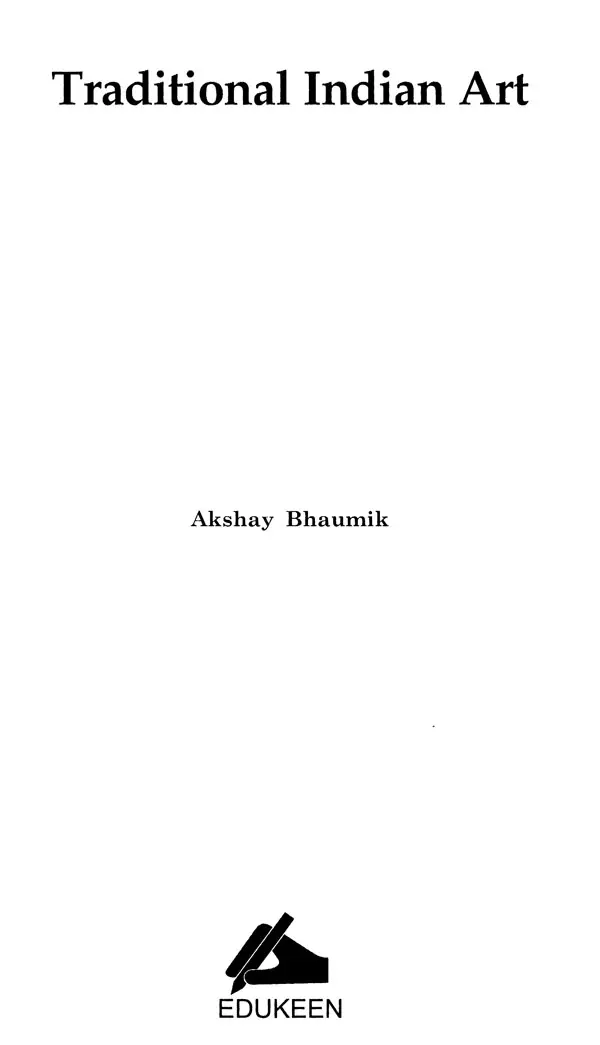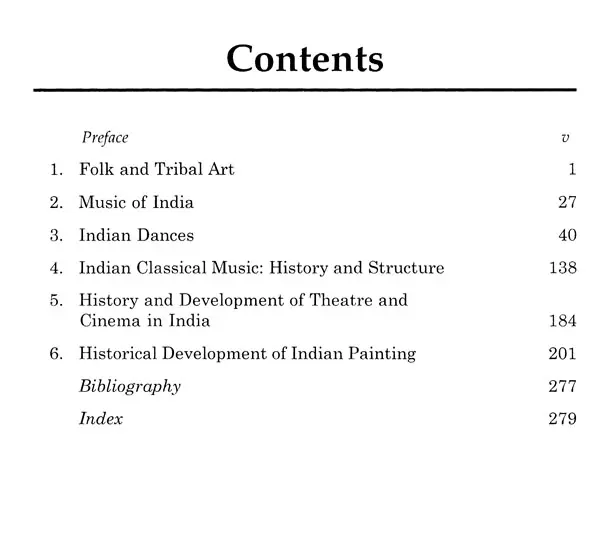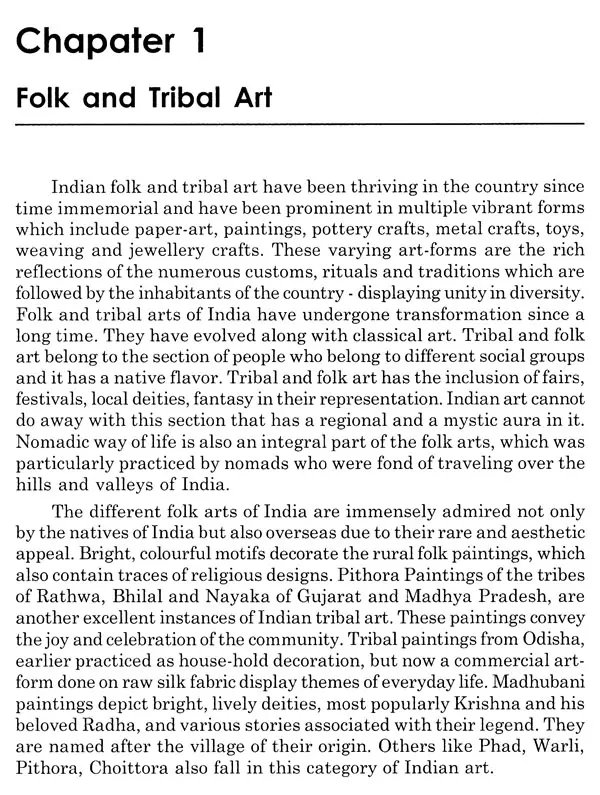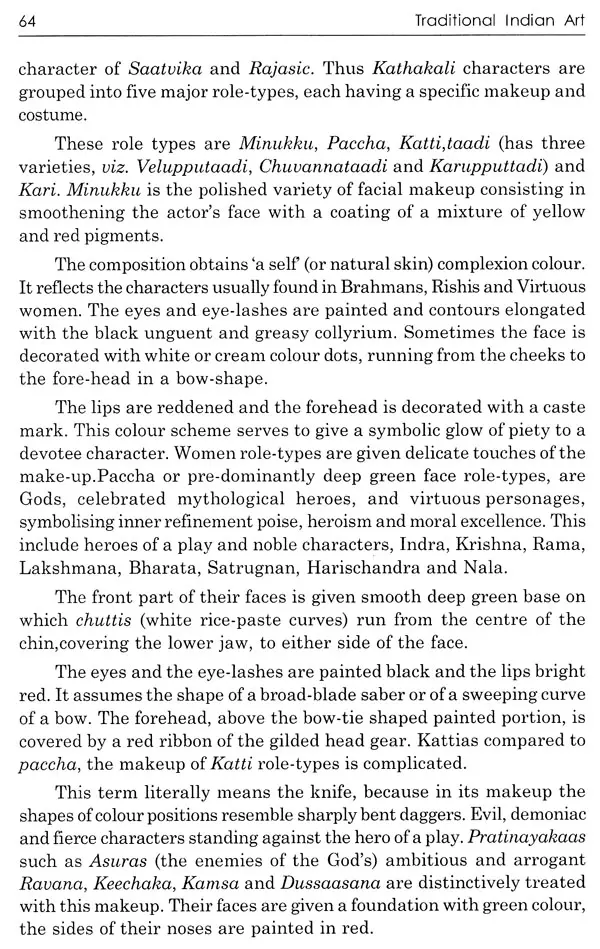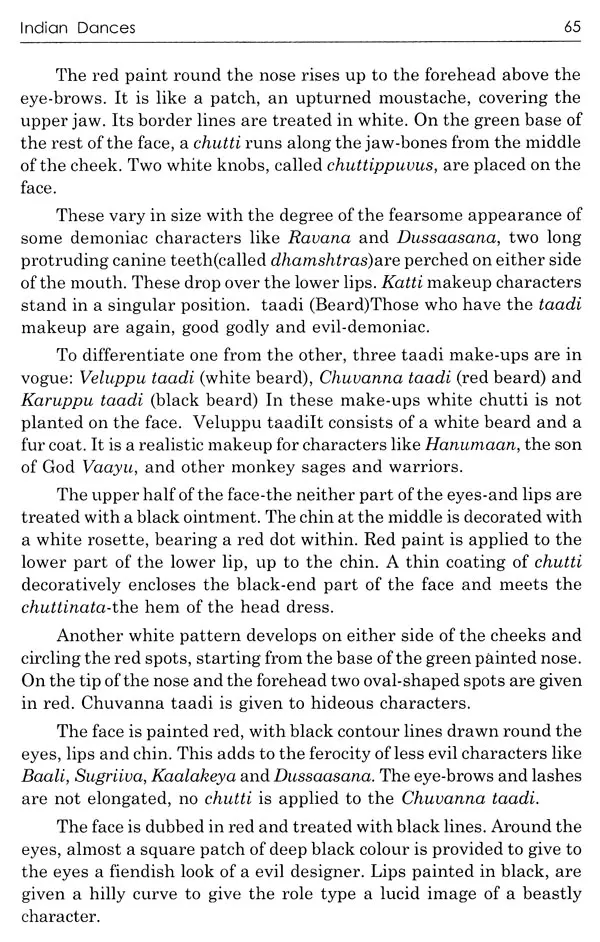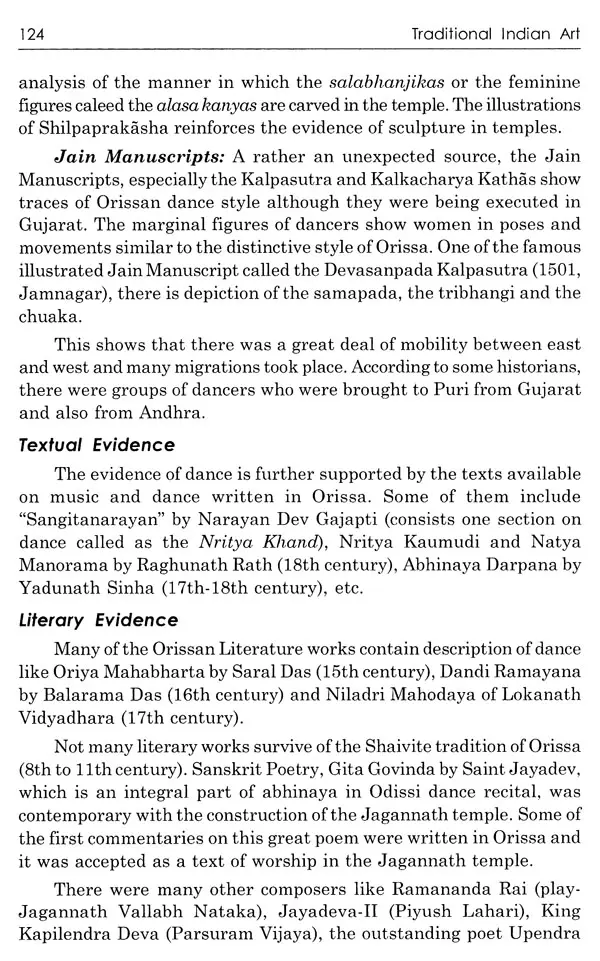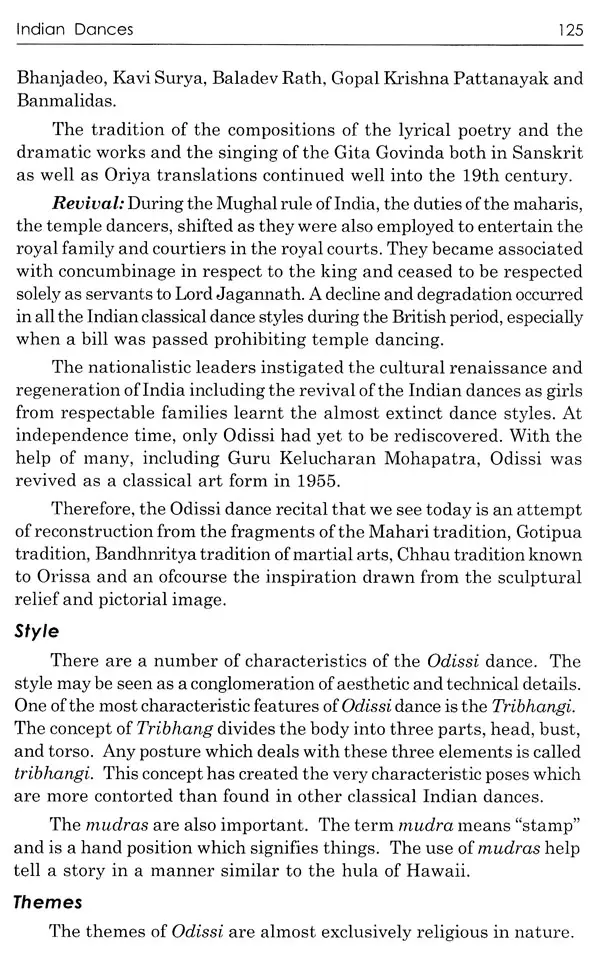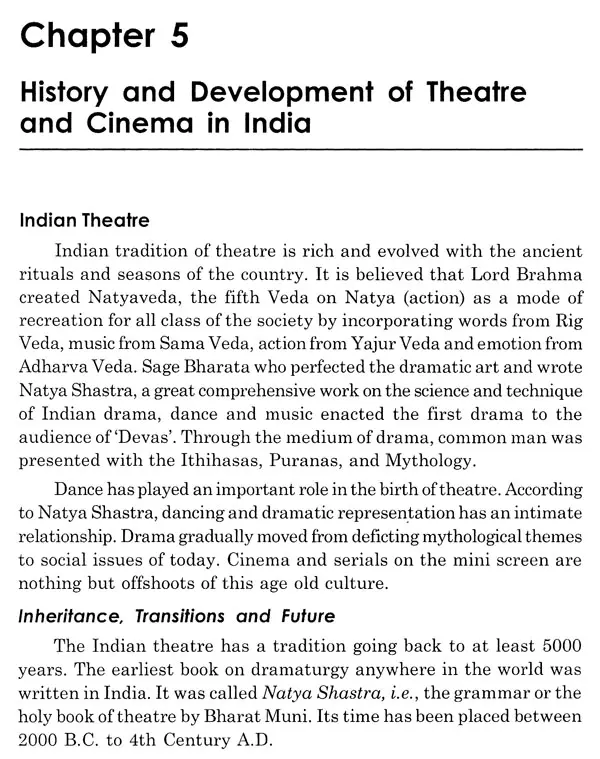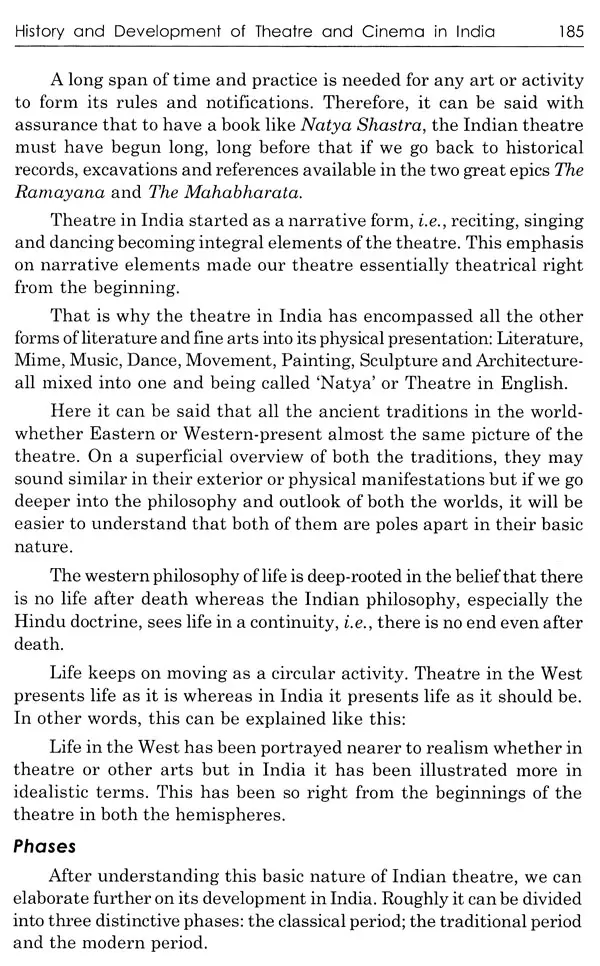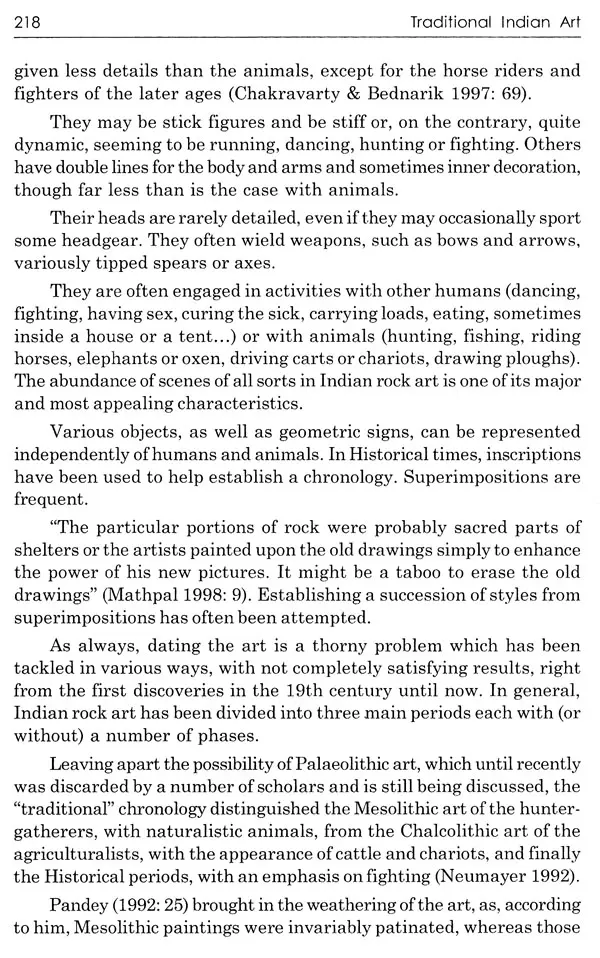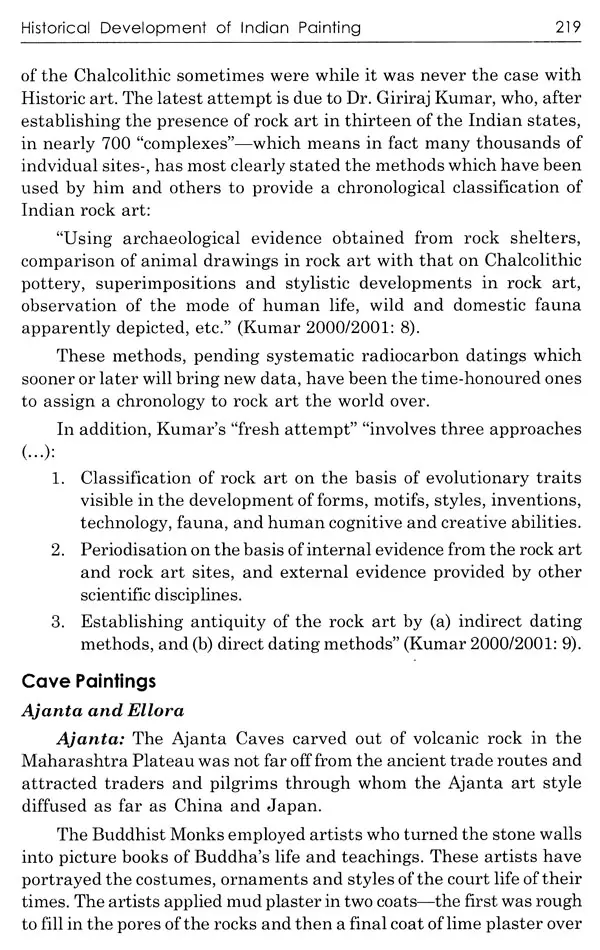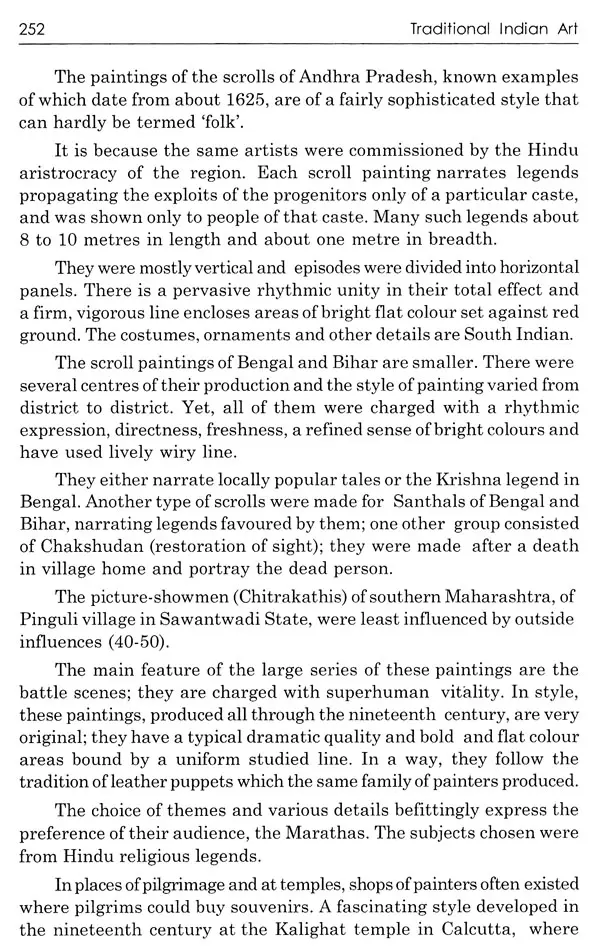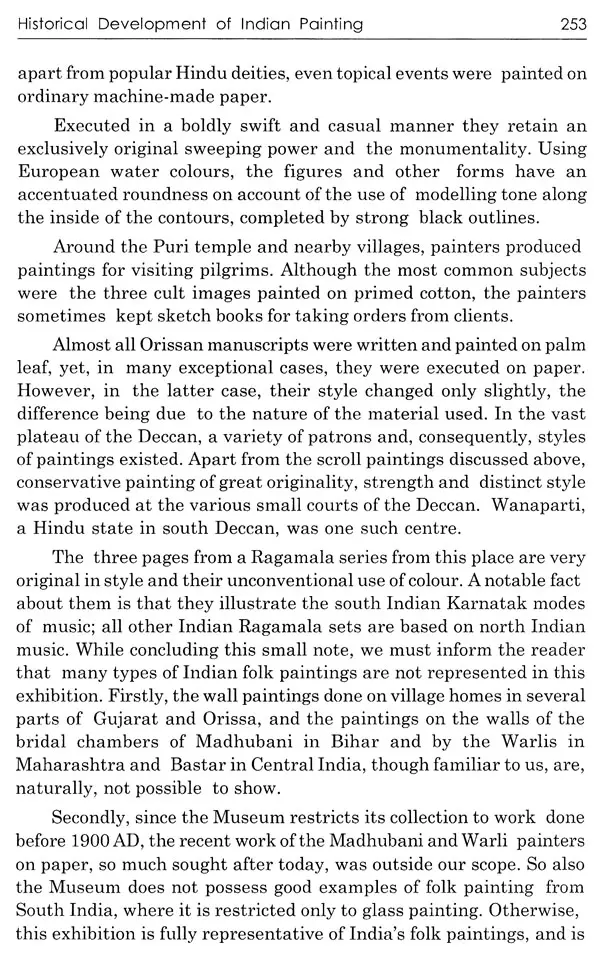
Traditional Indian Art
Book Specification
| Item Code: | UAR188 |
| Author: | Akshay Bhaumik |
| Publisher: | Edukeen Publisher |
| Language: | English |
| Edition: | 2022 |
| ISBN: | 9789390379699 |
| Pages: | 287 |
| Cover: | HARDCOVER |
| Other Details | 9.50 X 6.50 inch |
| Weight | 650 gm |
Book Description
Indian art consists of a variety of art forms, including painting, sculpture, pottery, music and textile arts such as woven silk. Geographically, it spans the entire Indian subcontinent. The performing arts range from vocal and instrumental music, dance and theatre to pantomime, sung verse and beyond. They include numerous cultural expressions that reflect human creativity and that are also found, to some extent, in many other intangible cultural heritage domains. Music is perhaps the most universal of the performing arts and is found in every society. Traditional theatre performances usually combine acting, singing, dance and music, dialogue, narration or recitation but may also include puppetry or pantomime. India is a powerhouse of performing arts, a colorful and multi-hued ritual that showcases talent like nothing else. Showcasing resplendent costumes, dazzling jewelry, quaint adornments and traditional practices, the art forms sew a cultural lore. This book is written for graduate students of history and performing art. Students will fine the book useful in their study.
Akshey Bhaumilk is Professor, Department of Dance and Music, R.K. College, Madhubani. He has done B.A. (Hons.) and M.A. in Instrumental Music and Vocal from T.M.B.U., Bhagalpur. His several research papers have been published in reputed journals. He has also attended many national seminars.
Indian art consists of a variety of art forms, including painting, sculpture, pottery, music and textile arts such as woven silk. Geographically, it spans the entire Indian subcontinent. The performing arts range from vocal and instrumental music, dance and theatre to pantomime, sung verse and beyond. They include numerous cultural expressions that reflect human creativity and that are also found, to some extent, in many other intangible cultural heritage domains. Music is perhaps the most universal of the performing arts and is found in every society, most often as an integral part of other performing art forms and other domains of intangible cultural heritage including rituals, festive events or oral traditions. It can be found in the most diverse contexts: sacred or profane, classical or popular, closely connected to work or entertainment. There may also be a political or economic dimension to music: it can recount a community's history, sing the praises of a powerful person and play a key role in economic transactions. The occasions on which music is performed are just as varied: marriages, funerals, rituals and initiations, festivities, all kinds of entertainment as well as many other social functions.
Dance, though very complex, may be described simply as ordered bodily movements, usually performed to music. Apart from its physical aspect, the rhythmic movements, steps and gestures of dance often express a sentiment or mood or illustrate a specific event or daily act, such as religious dances and those representing hunting, warfare or sexual activity. Traditional theatre performances usually combine acting, singing, dance and music, dialogue, narration or recitation but may also include puppetry or pantomime. These arts, however, are more than simply 'performances' for an audience; they may also play crucial roles in culture and society such as songs sung while carrying out agricultural work or music that is part of a ritual. In a more intimate setting. lullabies are often sung to help a baby sleep.
Book's Contents and Sample Pages
